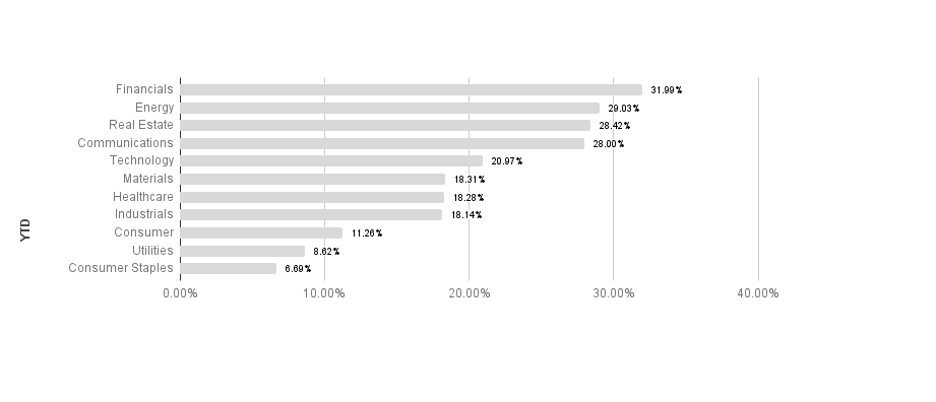Equity markets were positive this week as the Jackson Hole symposium drew to a close. Fed Chair Powell’s contribution was encouraging to markets, as he reiterated further the Fed position that inflation will be largely transitory. On the negative side, consumer sentiment continues to sag. PMI numbers also disappointed, but the most recent figures still reflect expansionary conditions.
Durable goods orders impressed analysts, coming in above expectations. Overall, the economy is well positioned to continue recovering from pandemic lockdowns, but inflation risks as well as labor challenges and production capacity are eating into productivity. In addition to macroeconomic factors, rising COVID infections also risk slowing economic progress.
Overseas, developed markets underperformed emerging markets, with both indices returning positive performance. European indices were positive, while Japanese markets also returned positive performance for the week. Improving prospects against the pandemic as well as improved prospects for economic recovery should continue to help lift markets globally over time.
Equity markets were positive this week as investors continue to assess the state of the global economy. While fears concerning global stability and health appear to be in decline, the recent volatility serves as a great reminder of why it is so important to remain committed to a long-term plan and maintain a well-diversified portfolio. When stocks were struggling to gain traction last month, other asset classes such as gold, REITs, and US Treasury bonds proved to be more stable. flashy news headlines can make it tempting to make knee-jerk decisions, but sticking to a strategy and maintaining a portfolio consistent with your goals and risk tolerance can lead to smoother returns and a better probability for long-term success.
Chart of the Week
The valuation gap between small cap equities and large cap equities has stretched to multi year highs. Small caps traditionally have a higher P/E ratio which reflect inherent growth opportunities, but this trend is not observed in current valuations.
Market Update
Equities
Broad market equity indices finished the week up, with major large cap indices underperforming small cap. Economic data has been mostly encouraging, but the global recovery has a long way to go to recover from COVID-19 lockdowns.
S&P sectors were mixed this week. Energy and financials outperformed, returning 7.34% and 3.47% respectively. Consumer staples and utilities underperformed, posting -1.36% and -2.11% respectively. Financials has taken the lead in 2021 with a 31.99% return.
Commodities
Oil rose this week as crude oil inventories shrunk more than expected. Energy markets have been highly volatile in the COVID era, but it appears that higher oil prices may be more of the norm given recent market fundamentals. Demand is still low compared to early 2020, but as global economies are continuing to improve, oil consumption is recovering rapidly. On the supply side, operating oil rigs are still well under early 2020 numbers, but trending upwards. In addition to supply and demand, a volatile dollar is likely to have a large impact on commodity prices.
Gold rose this week as the U.S. dollar weakened. Gold is a common “safe haven” asset, typically rising during times of market stress. Focus for gold has shifted again to include not just global macroeconomics surrounding COVID-19 damage and recovery efforts, but also inflation and its possible impact on U.S. dollar value.
Bonds
Yields on 10-year Treasuries rose this week from 1.2550 to 1.3070 while traditional bond indices fell. Treasury yield movements reflect general risk outlook, and tend to track overall investor sentiment. Expected increases in future inflation risk have helped elevate yields since pandemic era lows in rates. Treasury yields will continue to be a focus as analysts watch for signs of changing market conditions.
High-yield bonds rose this week as spreads tightened. High-yield bonds are likely to remain more stable in the short to intermediate term as the Fed has adopted a remarkably accommodative monetary stance and major economic risk factors subside, likely helping stabilize volatility.
Lesson to Be Learned
“The secret to investing is to figure out the value of something – and then pay a lot less.”
-Joel Greenblatt
FormulaFolios has two simple indicators we share that help you see how the economy is doing (we call this the Recession Probability Index, or RPI), as well as if the US Stock Market is strong (bull) or weak (bear).
In a nutshell, we want the RPI to be low on a scale of 1 to 100. For the US Equity Bull/Bear indicator, we want it to read at least 66.67% bullish. When those two things occur, our research shows market performance is typically stronger, with less volatility.
The Recession Probability Index (RPI) has a current reading of 26.15, forecasting a lower potential for an economic contraction (warning of recession risk). The Bull/Bear indicator is currently 100% bullish, meaning the indicator shows there is a slightly higher than average likelihood of stock market increases in the near term (within the next 18 months).
It can be easy to become distracted from our long-term goals and chase returns when markets are volatile and uncertain. It is because of the allure of these distractions that having a plan and remaining disciplined is mission critical for long term success. Focusing on the long-run can help minimize the negative impact emotions can have on your portfolio and increase your chances for success over time.
The Week Ahead
This week sees updated ISM PMI figures, as well as updated nonfarm payrolls and unemployment rates. The market expectations are for hiring to come in at approximately 750K while unemployment is expected to drop to 5.2%.
More to come soon. Stay tuned.








